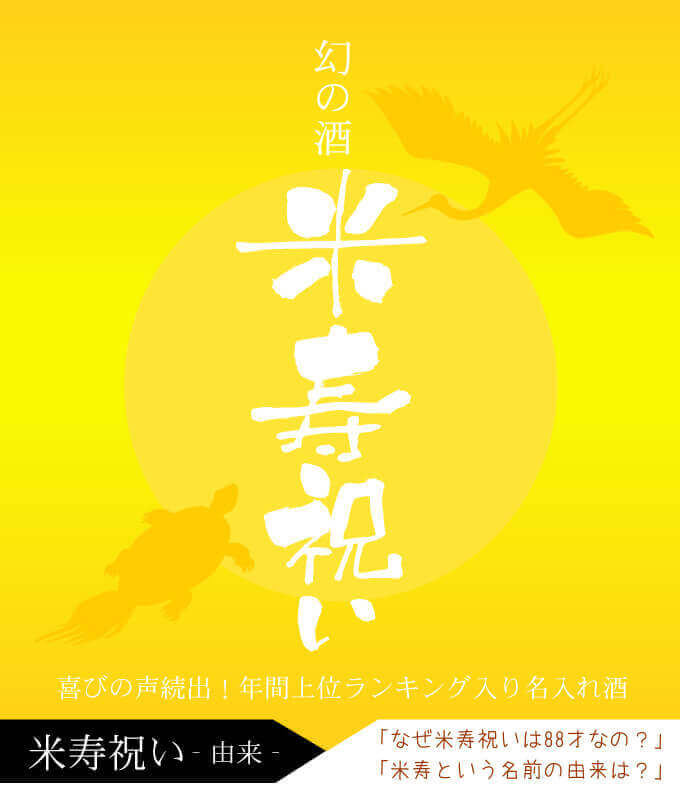Origin of the name “Beiju”
"Beijuiwai" Year of 88 years in several years Show the celebration to do.
Disassembling and replacing parts of the “rice” character of “Beiju” should be the Chinese numerals “eight”, “ten” and “eight”. In addition, it is said that it is a very difficult age because of the double spread of “Hachi”, and it became a “Celebration of 88”.

While the average life expectancy of Japanese men is said to be in the 70 age, the longevity celebrations that celebrate the age of life, such as the 60th birthday, Kouki, Kishou, Umbrella life, are called "Nenju". I am very pleased to be able to welcome 88 years old with energy.
Is it okay to celebrate the life expectancy of “Age”?
"Counting Year"Is the age of 1 when born, and how to count the age that has been passed on to Japan for a long time when you get 1 every time the New Year comes"Mature age"Is the age of 0 when born, and 1 years after each 1 year.
Rice celebrationYear of 88 years in several yearsIt is said that the celebration is held at (= 87 years old), but in modern times, it is becoming more common to celebrate on the day of the birthday, the so-called "88 years old".
There are no specific rules, but please be aware that celebrations may be held in “Counting Years” or “Mature Age” depending on the area where you live, customs, or family practices.
* The age chart at our shop is indicated as “Age of full age 88”.
Reasons for choosing "Yellow" as a gift
“Golden”, “Golden brown”, and “Yellow” are the key colors for the celebration. The reason is that the color associated with the word “rice” is the “golden color” that shines in the rice fields that have reached the fruitful season.
It is often celebrated by preparing “Yellow” and “Golden” Chanchanko and cushions as gifts for the rice celebration, but apart from that, more and more daily items using “Yellow” and “Golden” are also given. It was.
The story of past and present of rice life related to "rice"
The “Kotobuki celebration”, formerly called “Kome no Iwai”, prepares a gift related to rice, not only the person who celebrates the celebration, but also all the guests who are celebrating. = A stick that flattens the grain that is ever grown. It is also called “Makisaki”) and “Blowing Bamboo (Hifuki only = a tool used to blow fire when cooking rice)”.
Sake prepared with phantom sake is also made from rice. I would be pleased if you could use it as a “behavioral sake” for celebratory seats.


